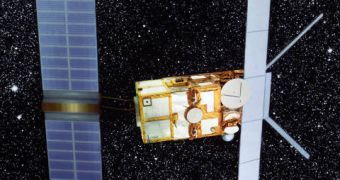The European Space Agency has pondered the idea of building a common operation center for several of its missions over the last years, simply because centralizing them in a single location might prove to be the most effective, efficient, and cheap method of caring for its Earth-observing satellites. That is to say, the agency's observatory fleet is constantly increasing, and letting a certain command hub take care of just one mission would be a waste of resources, engineers at ESA say. A Dedicated Control Room (DCR) would also greatly improve the economic returns of each mission.
For example, those in charge of the Envisat and ERS-2 satellite missions have worked for a long time out from a combined Earth Observation (EO) DCR, at the European Space Operations Center (ESOC). When the project became a reality, the two missions shared a number of engineers, as well as a great deal of technical resources, which allowed the flight control teams to increase their effectiveness in the work they did. Resource usage reached a peak level as well, as data from both missions were combined and then separated again in ESA's computer grid.
On March 17th, the DRC welcomed a new member, as the GOCE mission lifted up to a low Earth orbit. The observatory, one of the finest and certainly the most beautiful ever built, is meant to assess minute gravitational anomalies on the planet's surface, and, for the very weird orbit it's flying in, its telemetry has to be perfect.
When the observatory was launched, it only came natural for ESA leaders to move the engineer teams associated with GOCE to the DCR. “The launch of GOCE offered yet another opportunity to further improve and expand the degree of integration between Earth observation mission teams,” ESA ESOC Mission Operations Director Manfred Warhaut said.
Until 2013, a number of other Earth-observing satellites will be launched to orbit, including Cryosat-2 and SMOS, in 2009, and SWARM, ADM-Aeolus, and EarthCARE, sometime between 2010 and 2013. An additional fleet of six Sentinel satellites will be launched between 2011 and 2015, and chances are that all of these missions will be coordinated from the DRC, inside what the European Space Agency has come to term the Mission Family concept.
The first System Validation Test for the ADM-Aeolus observatory, a closed-loop test for Cryosat-2's attitude and orientation control system, and a series of simulations designed to assess GOCE's status, all had to be simultaneously performed in the weeks before GOCE's launch. This tight schedule put the Mission Family concept to the test, but it would appear that the large concentration of engineers on square foot managed to successfully solve all problems that appeared.
“The traditional, individual 'one-satellite/one-team' approach would not have allowed us to achieve the objectives of this complex multi-mission test campaign. Pooling our technical and human resources enables us to achieve much more in a shorter time, and working on multiple missions enables the engineers to support each other,” the ADM-Aeolus ESOC Spacecraft Operations Manager, Pier Bargellini, shared.

 14 DAY TRIAL //
14 DAY TRIAL //